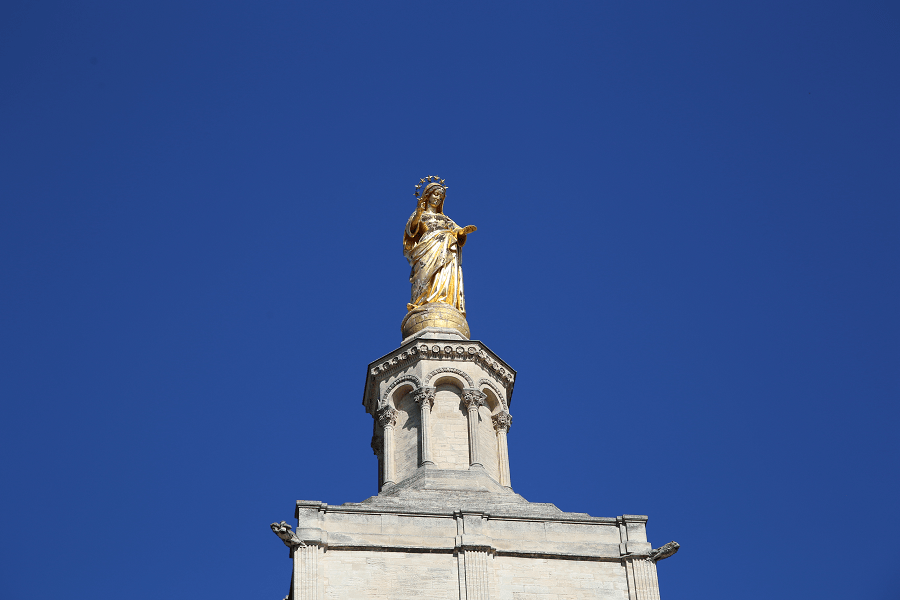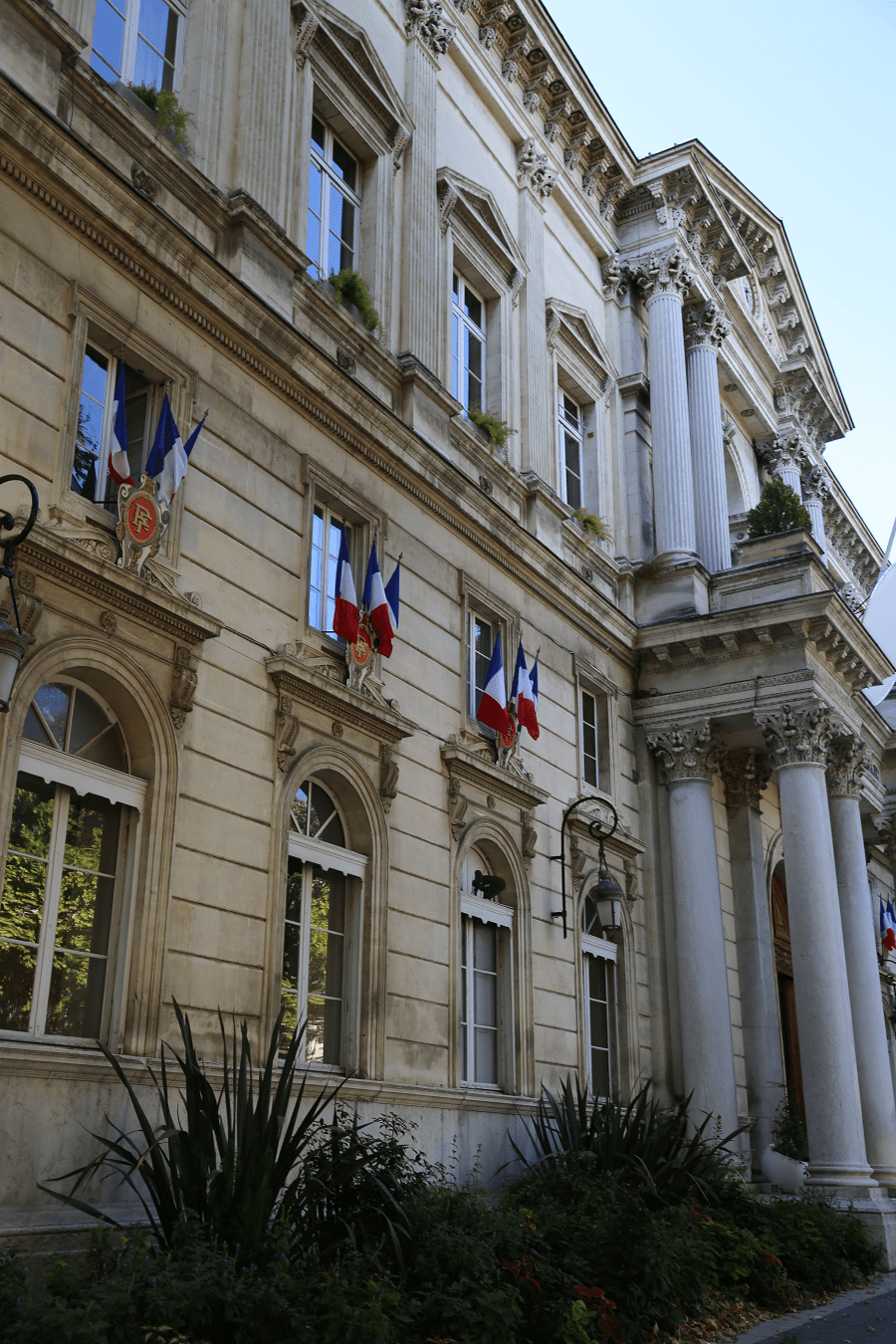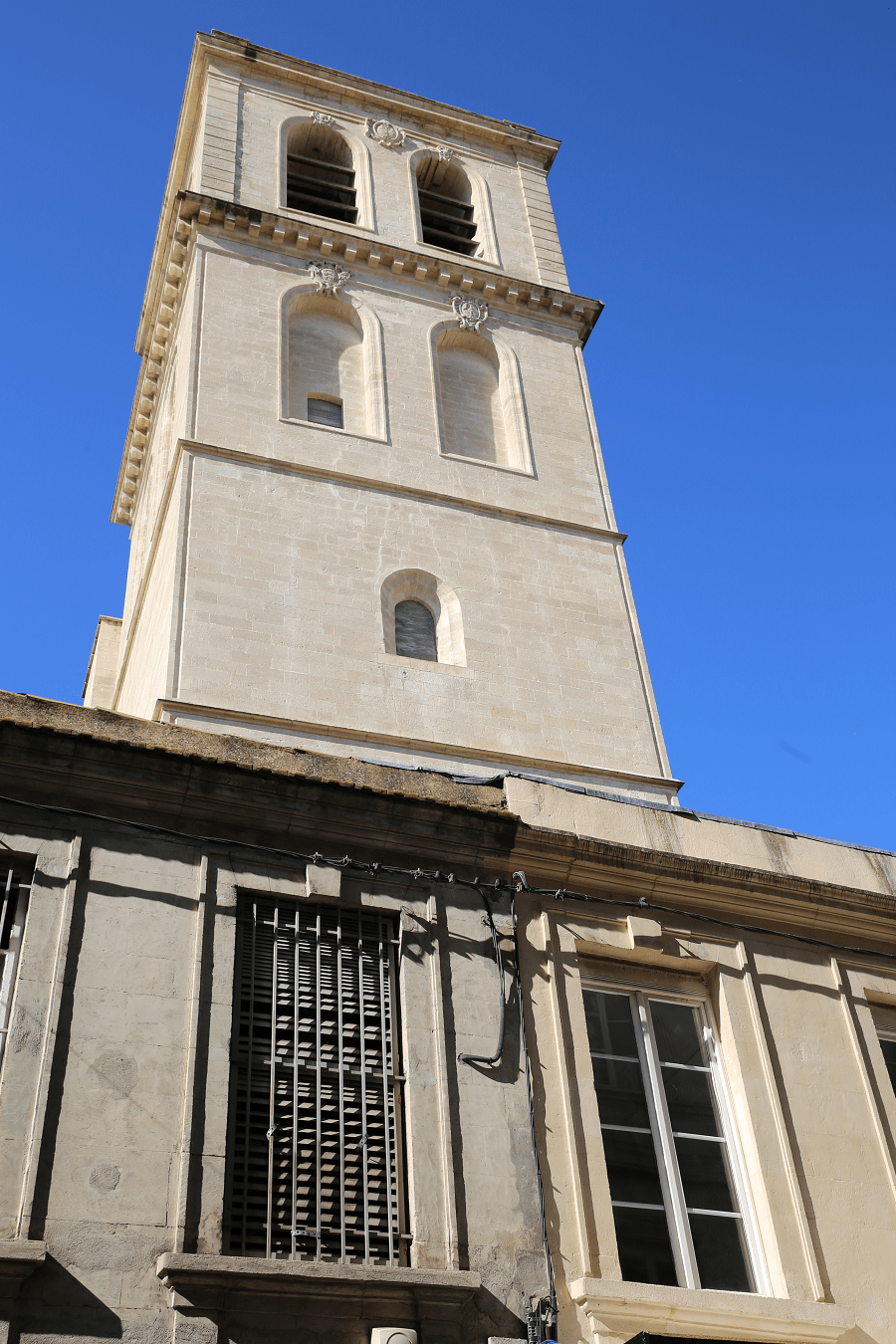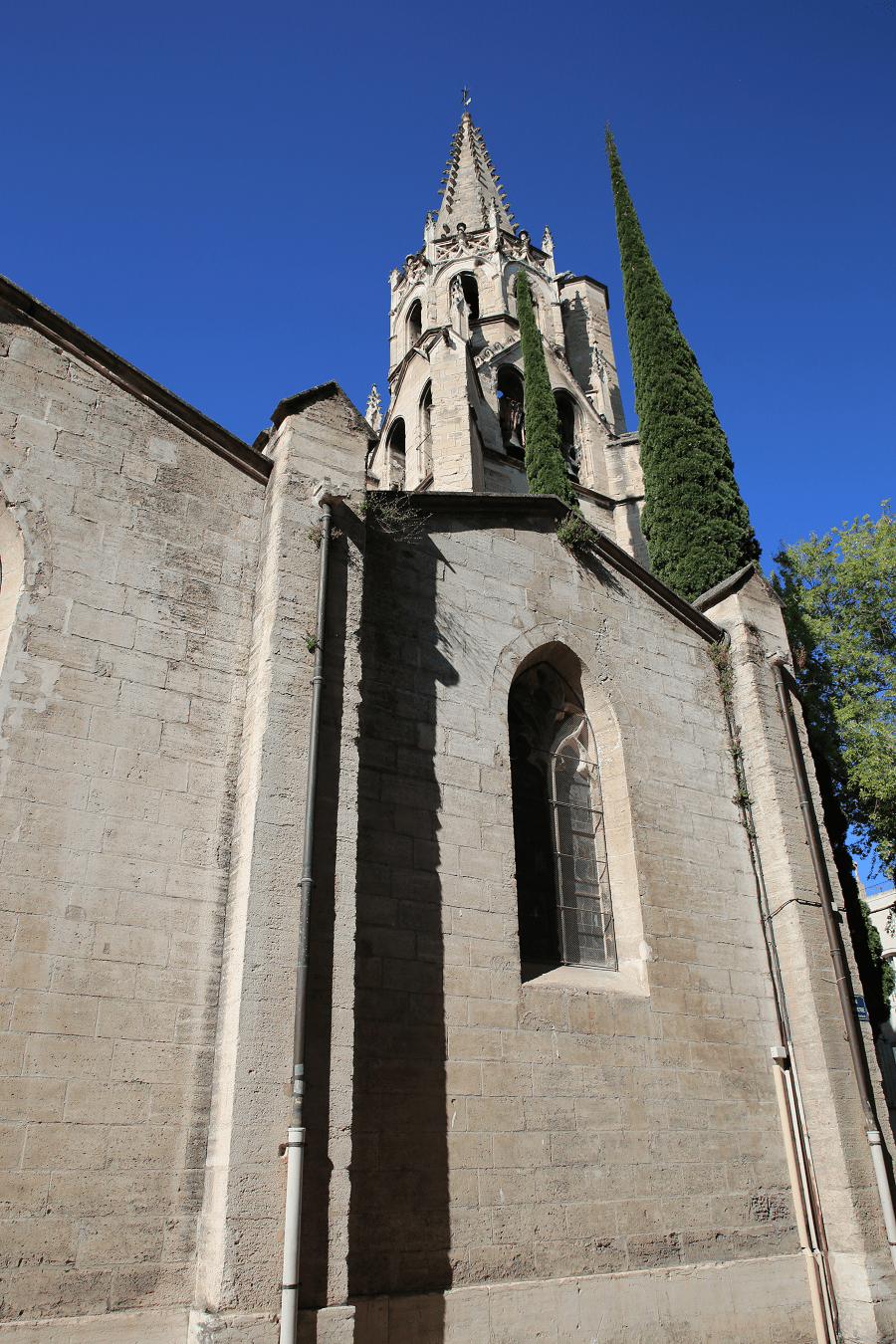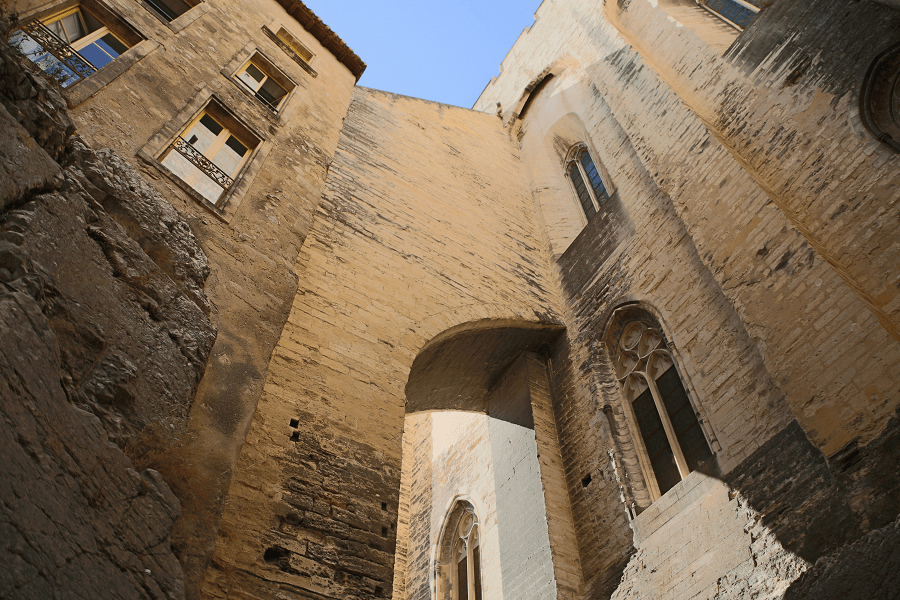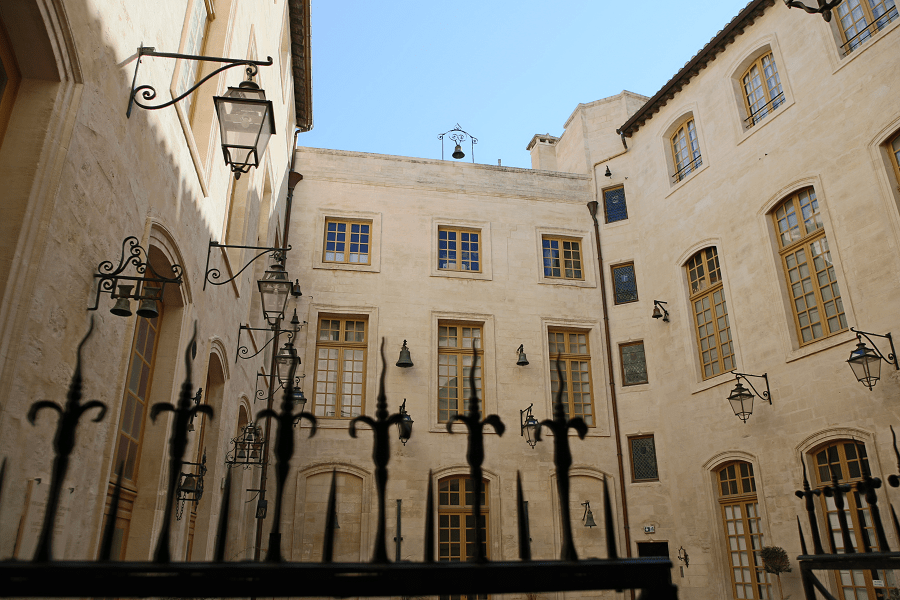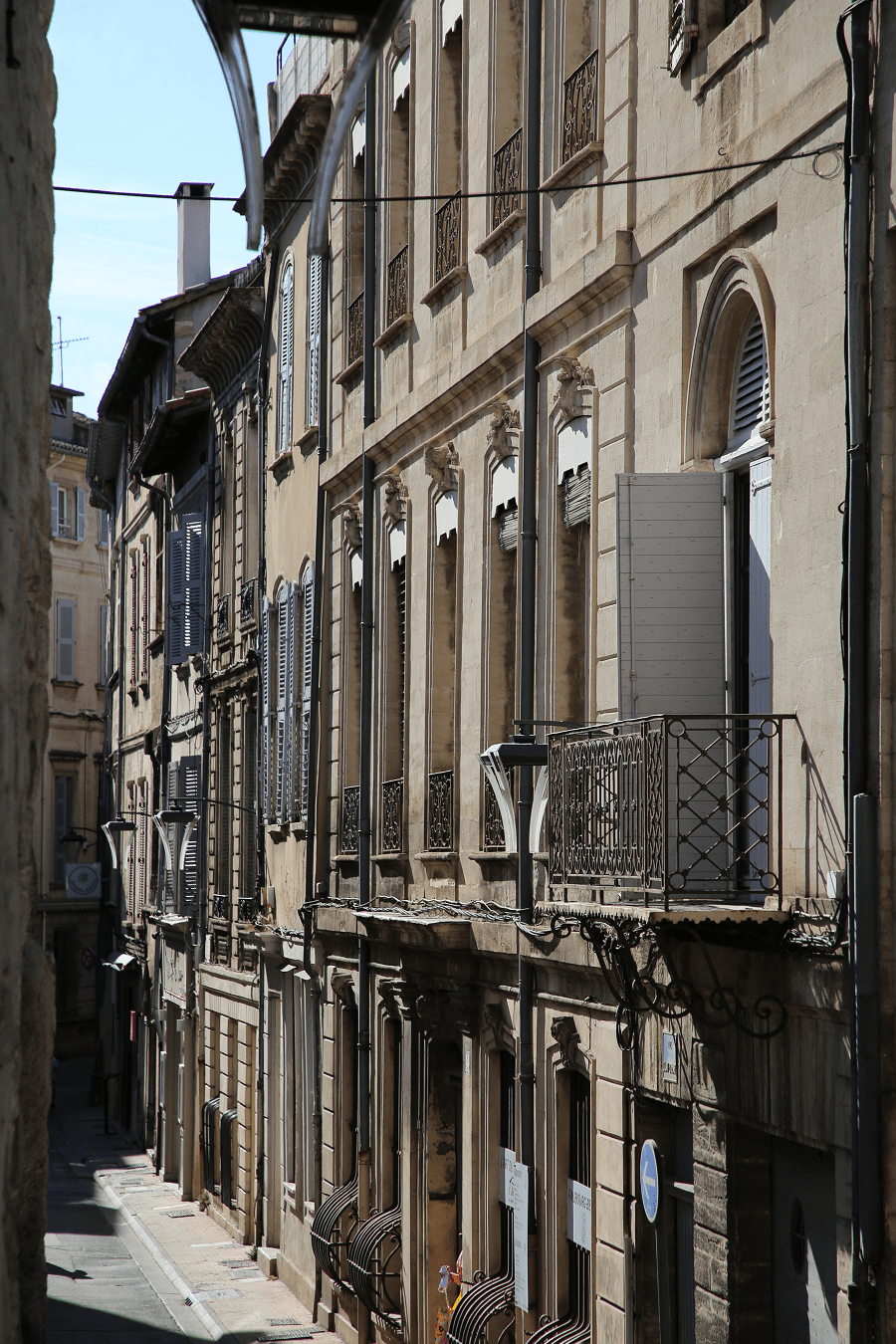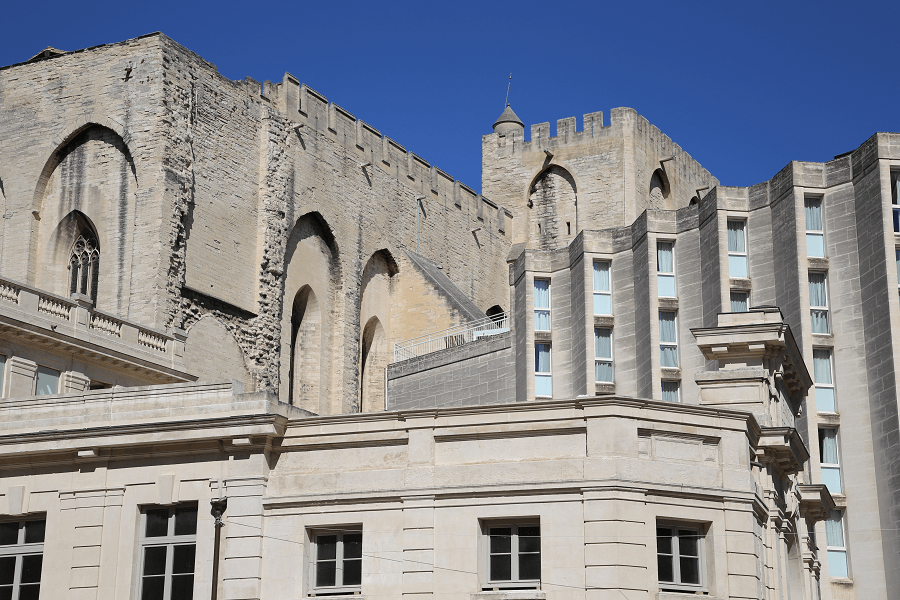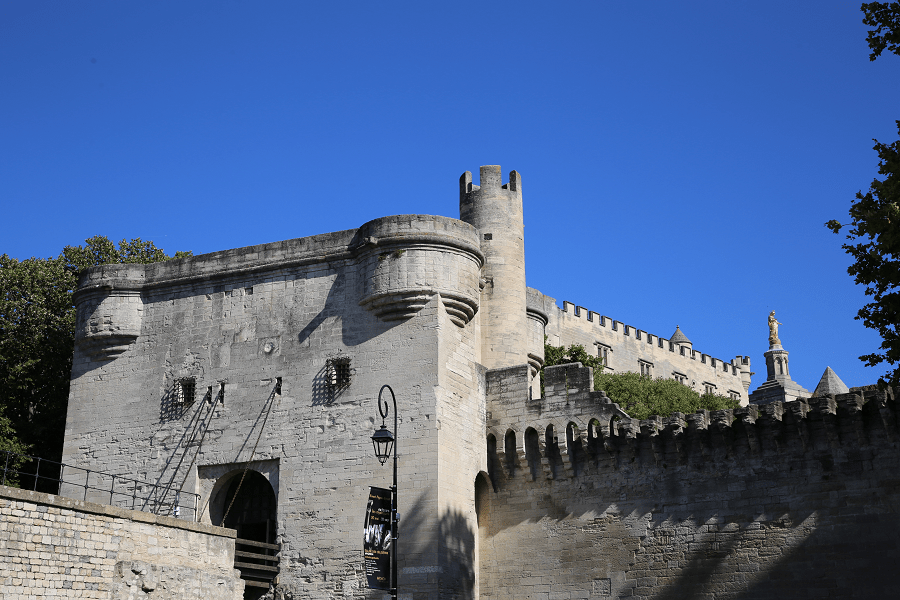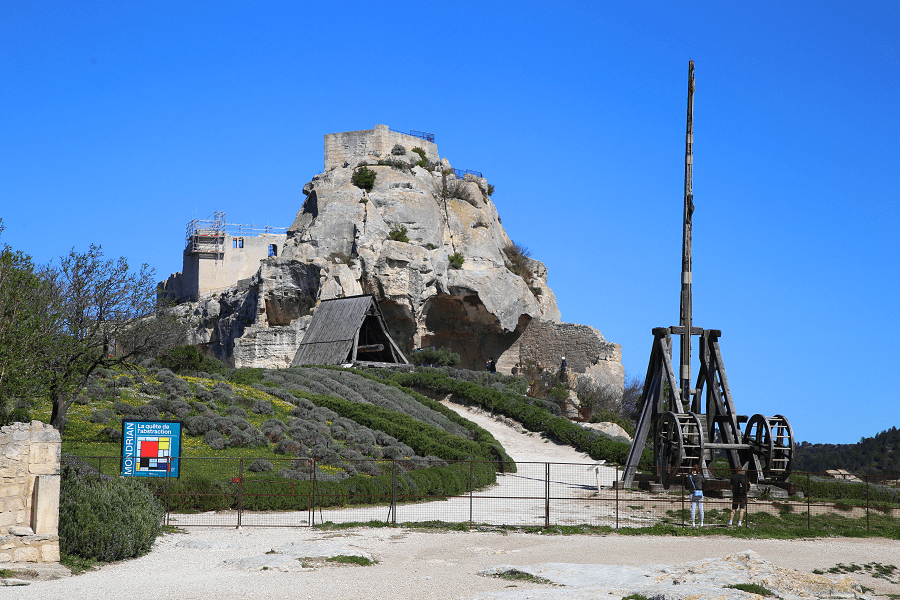Avignon (Fr. Avignon) is the prefecture of the Vaucluse department in the Provence-Alpes-Côte d’Azur region of Southeastern France.
It is one of the rare French towns to have preserved its ramparts and its historic centre, made up of the papal palace, the episcopal complex, the Rocher des Doms and the Avignon bridge. It has been classified as a UNESCO World Heritage Site under criteria I, II and IV.
The fame of its festival of performing arts, a true artistic and cultural showcase of the city, has gone far beyond French borders. The city was European capital of culture in 2000.
Avignon has an important student heart, in particular thanks to its student district (Agroparc) as well as its university.
Main attractions
Avignon has more than 170 sites and buildings registered as historical monuments. The whole city centre lies within ramparts built by popes in the fourteenth century, and to this day a unique monument encircles Avignon.
The ramparts are one of the finest examples of medieval fortification in existence. The walls are of great strength and are surmounted by machicolated battlements flanked at intervals by 39 massive towers and pierced by several gateways, three of which date from the fourteenth century.
TOP 5 places to visit in the Old City of Avignon:
The Palace of the Popes – is one of the largest and most important medieval Gothic buildings in Europe. Once a fortress and palace, the papal residence was the seat of Western Christianity during the fourteenth century.
The Pont Saint-Bénézet, also known as the Pont d’Avignon, is a famous medieval bridge and one of the symbols of the city. The first bridge was built between 1177 and 1185 but was destroyed during the siege of Avignon by Louis VIII of France in 1226. Beginning in 1234 the bridge was rebuilt.
Avignon Cathedral (Fr. Cathédrale Notre-Dame des Doms d’Avignon) is a Roman Catholic church located next to the Palais des Papes. The cathedral is the seat of the Archbishop of Avignon. The cathedral is a building in Romanesque style, constructed primarily in the second half of the twelfth century. The bell tower collapsed in 1405 and was rebuilt in 1425. In 1670–1672 the apse was rebuilt and extended.
The Musée du Petit Palais is a museum and art gallery opened in 1976 and has an exceptional collection of Renaissance paintings of the Avignon school as well as from Italy, which reunites many “primitives” from the collection of Giampietro Campana. It is housed in a fourteenth century building at the north side of the square overlooked by the Palais des Papes.
Basilique St-Pierre, in the centre of the city, was built between the fourteenth and sixteenth centuries in the Flamboyant Gothic style.
Among most interesting museums are:
Calvet Museum. Its collections also include goldwork, faience, porcelain, tapestries, ironwork and other examples decorative arts, along with archaeology and Asian, Oceanian and African ethnography
The Musée Angladon houses the paintings of a private collector who created the museum.
Musée Lapidaire, with collections of archaeological and medieval sculptures from the Fondation Calvet in the old chapel of the Jesuit College.
River tourism
The Rhône river is 813 kilometres long and has its source in the Swiss Alps. River tourism has recreated the more than thousand-year-old tradition which made the Rhône the link between Avignon, Lyon, Switzerland.
The start was timid in 1994 with only three hotel boats, in 2011, a fleet of 21 vessels, including six sightseeing boats, anchored on the quays of the alleys of l’Oulle. In addition, a free river shuttle connects the Avignon Center district to the Barthelasse-Piot district of the city of Avignon.
Cuisine and restaurants
It was in 1835 when the first book devoted to Avignon cuisine and more generally southern cuisine was printed. This Pierre Chaillot book was a collection of more than 800 Avignon recipes from various origins.
“Authentic” Avignon gastronomy is part of a Mediterranean background, through the use of olive oil, onions, and the wide variety of herbs and condiments.
On a finer scale, it is part of an Occitan ensemble characterized by the use of oil (olive or not), as opposed to the northern half of France, which uses butter.
Avignon cuisine is also a part of the Provençal domain, with diverse recipes. Vegetables are widely used: legumes such as lentils, beans, broad beans, chickpeas, but also tomatoes, artichokes, eggplant and zucchini. The use of cereals such as spelled, but also of condiments such as garlic and thyme, also characterize Provençal cuisine. The people of Provence can be recognized in many distinctive dishes, still prepared today by the people of Avignon: stew, aioli, ratatouille, spelled soup, etc.
Best restaurants according to Michelin guide:
La Vieille Fontaine, 12 place Crillon, Avignon, 38 – 115 EUR • Modern Cuisine. One star
Restaurant Sevin, 10 rue de Mons, Avignon, 38 – 133 EUR • Modern Cuisine. One star
La Mirande, 4 place Amirande, Avignon, 60 – 135 EUR • Classic Cuisine. One star
Shopping
Main shopping area in the city center – the rue de la République.
AuShopping Avignon Nord is currently the largest shopping area in Europe. The area composed of a shopping arcade, around the Auchan hypermarket and a commercial ring around the center.
Buld’Air: composed of an outdoor shopping arcade, around the large IKEA brand. The shopping area has many large national and international brands in their own buildings, as well as three business areas:
La Tour Blanche: made up of Décathlon, Class’Croute, Brico Dépôt, TATI and Chausséa.
Fontvert: made up of different shops, restaurants, nightclubs and clinic.
Saint-Tronquet: made up of various shops, restaurants and nightclubs as well as the Cinéma Capitole Studios.
Transport and how to get to?
Airport: Avignon Provence airport is at the edge of the city and offers several international lines to England (Southampton, Birmingham). About 16,000 passengers pass through the airport each year.
Trains: Avignon is served by 3 stations.
Avignon-Center station, a historic station dating from 1860, located on the border of the Avignon Center and Avignon Ouest districts, outside the walls, facing the ramparts, which can accommodate any type of train.
Since 2001, the Avignon TGV station, in the Avignon Ouest district, built on the LGV Méditerranée line.
Avignon also has a TER station, the Montfavet station, located in the Montfavet district as well as the Avignon Sud station, located in the Saint-Chamand district in Avignon. Avignon therefore has 3 stations: the stations of Avignon Center (TGV – TER PACA – TER Occitanie – Eurostar – Merchandise), Avignon TGV (TGV – TER PACA – TER Occitanie – RENFE Spain), Montfavet (TER PACA).
Tram: Avignon also has a tram network, with a line commissioned on October 19, 2019. A second line is planned for 2023.
Shortest distance by car:
From Menton (tolls): 3 h (290 km) via A8
From Monaco (tolls): 2 h 53 min (282 km) via A8
From Beaulieu-sur-Mer (tolls): 2 h 57 min (269 km) via A8
From Villefranche-sur-Mer (tolls): 2 h 55 min (267 km) via A8
From Nice (tolls): 2 h 40 min (260 km) via A8
From Cagnes-sur-Mer (tolls): 2 h 27 min (248 km) via A8
From Antibes (tolls): 2 h 31 min (246 km) via A8
From Cannes (tolls): 2 h 26 min (233 km) via A8
From Mandelieu-La Napoule (tolls): 2 h 8 min (224 km) via A8 and A7
From Fréjus (tolls): 2 h 3 min (202 km) via A8 and A7
From Saint-Raphaël (tolls): 2 h 8 min (204 km) via A8 and A7
From Sainte-Maxime (tolls): 2 h 7 min (205 km) via A8 and A7
From Saint-Tropez (tolls): 2 h 24 min (206 km) via A8 and A7
From Cavalaire-sur-Mer (tolls): 2 h 31 min (212 km) via A8 and A7
From Toulon (tolls): 1 h 46 min (167 km) via A50 and A7
From Aix-en-Provence (tolls): 1 h 8 min (91.1 km) via A7
From Nîmes (tolls): 47 min (45.1 km) via A9 and N100
From Marseille (tolls): 1 h 12 min (103 km) via A7
From Montpellier (tolls): 1 h 18 min (95.4 km) via A9
From Sète (tolls): 1 h 28 min (124 km) via A9
From Agde (tolls): 1 h 41 min (149 km) via A9
From Pézenas (tolls): 1 h 42 min (151 km) via A9
From Béziers (tolls): 1 h 50 min (160 km) via A9
From Perpignan (tolls): 2 h 29 min (244 km) via A9
From Argelès-sur-Mer (tolls): 2 h 47 min (271 km) via A9
From Collioure (tolls): 2 h 52 min (279 km) via A9
From Narbonne (tolls): 1 h 59 min (184 km) via A9
From La Baule-Escoublac (tolls): 8 h 57 min (977 km) via A71
From Saint-Nazaire (tolls): 8 h 54 min (962 km) via A71
From Nantes (tolls): 8 h 11 min (913 km) via A62
From Saumur (tolls): 7 h 10 min (771 km) via A71 and A7
From Les Sables-d’Olonne (tolls): 8 h 18 min (901 km) via A62
From Cognac (tolls): 6 h 38 min (688 km) via A62
From Angoulême (tolls): 6 h 35 min (686 km) via A62
From Eauze (tolls): 4 h 53 min (460 km) via A61 and A9
From La Rochelle (tolls): 7 h (750 km) via A62
From Rochefort (tolls): 6 h 41 min (722 km) via A62
From Saintes (tolls): 6 h 23 min (686 km) via A62
From Arcachon (tolls): 5 h 56 min (624 km) via A62 and A9
From Royan (tolls): 6 h 45 min (689 km) via A62
From Biarritz (tolls): 5 h 59 min (632 km) via A64 and A9
From Saint-Jean-de-Luz (tolls): 6 h 2 min (638 km) via A64 and A9
From Bayonne (tolls): 5 h 50 min (620 km) via A64 and A9
From Dax (tolls): 5 h 50 min (599 km) via A64 and A9
From Lourdes (tolls): 4 h 50 min (498 km) via A64, A61 and A9
From Pau (tolls): 5 h 4 min (515 km) via A64, A61 and A9
From Périgueux (tolls): 5 h 50 min (606 km) via A20 and A9
From Bordeaux (tolls): 5 h 30 min (572 km) via A62, A61 and A9
From Toulouse (tolls): 3 h 19 min (330 km) via A61 and A9
From Carcassonne (tolls): 2 h 30 min (239 km) via A9
From Andorra (tolls): 5 h 8 min (420 km) via A9
Main information
Area: 65 sq. km
Population: 92 000
Languages: French
Currency: euro
Visa: Schengen
Time: Central European UTC +1
Coordinates: 43°57′00″N 04°48′27″E




